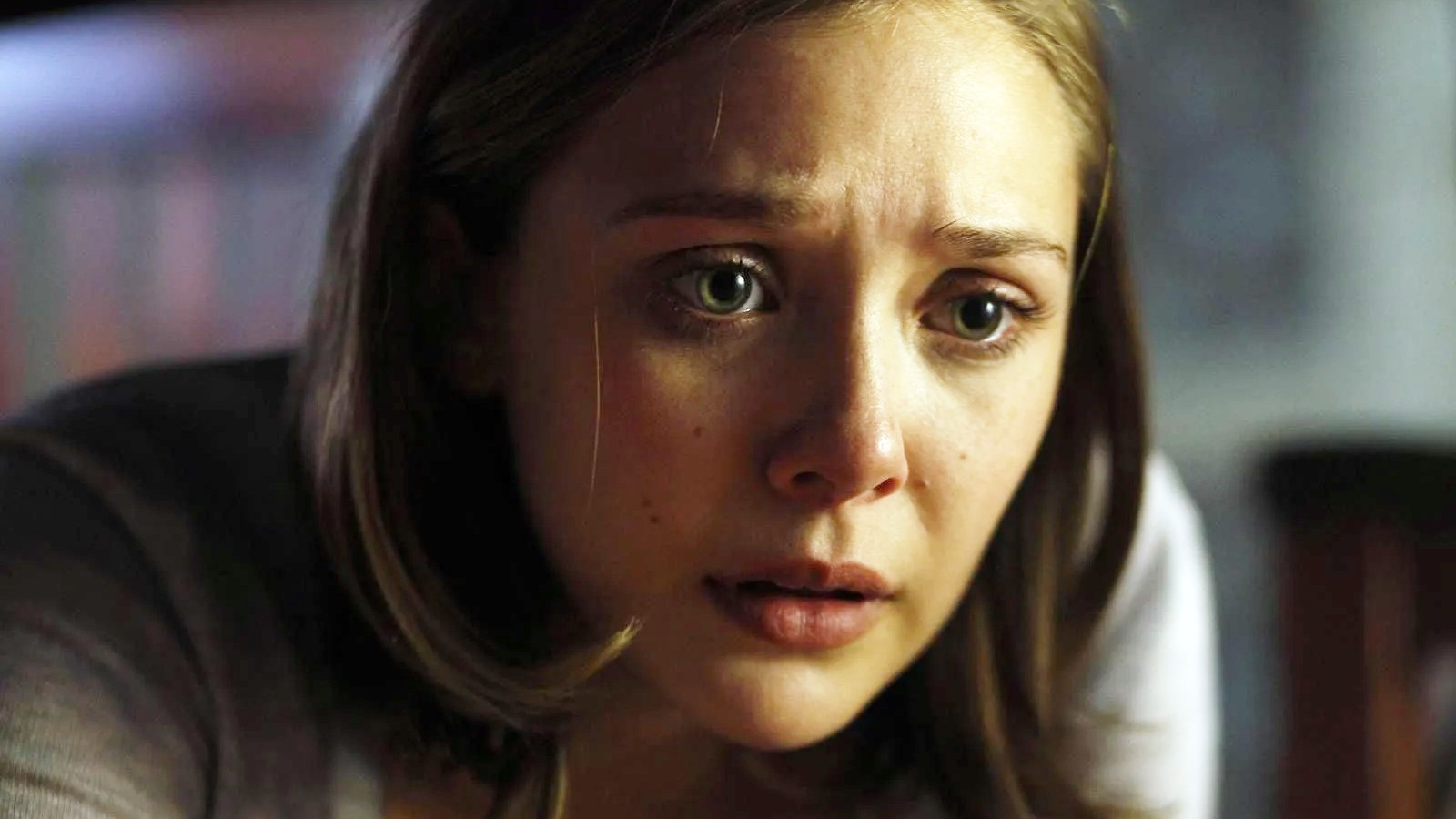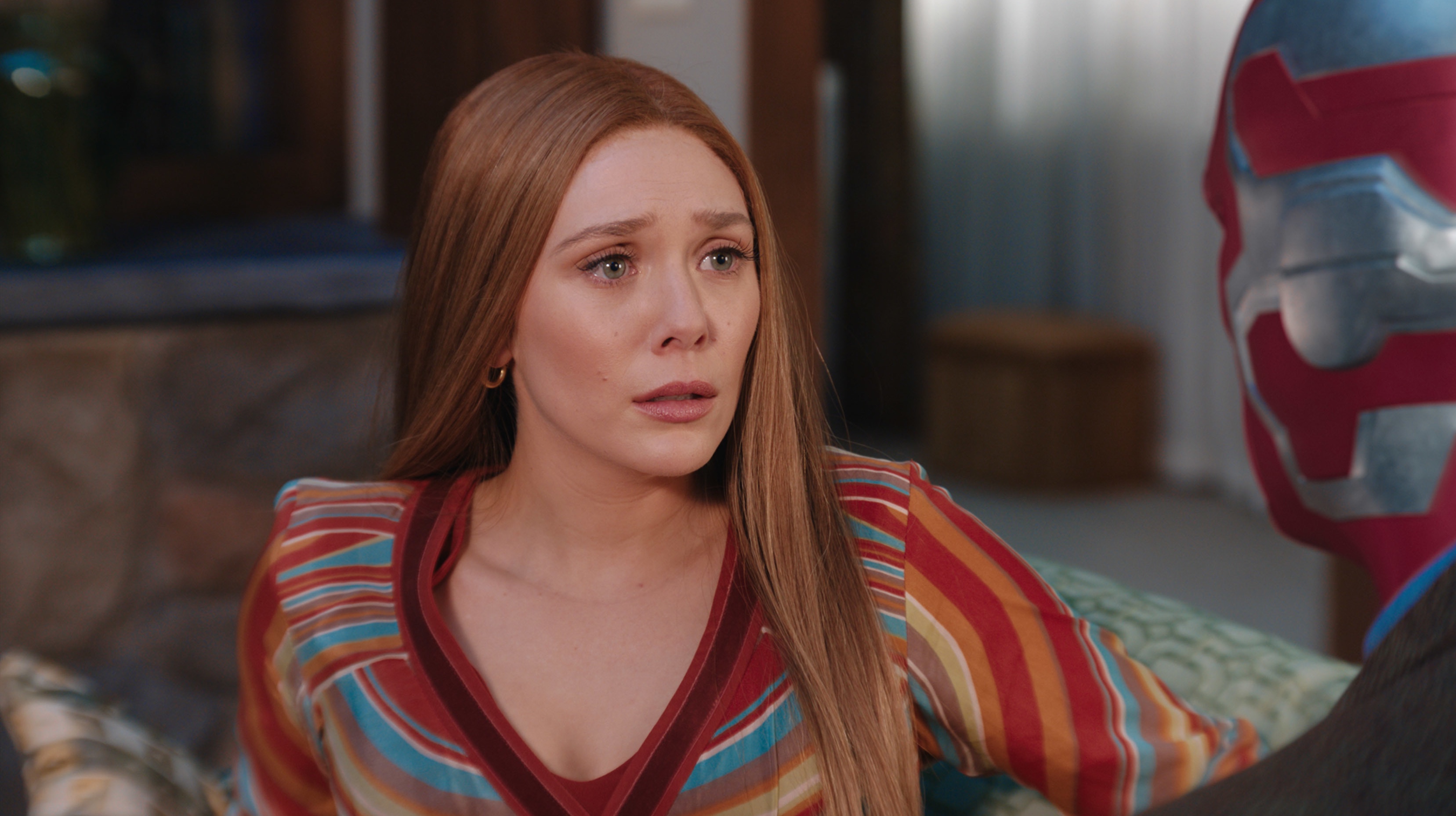Elizabeth Olsen has yet to give us a character who isn’t both terrorized and psychologically broken, not to mention chilly. So the world admittedly feels a bit off balance when she walks into a suite at New York’s Le Parker Meridian hotel with her petite shoulders humbly hunched, her smile brightly beaming, and those stunning peridot eyes emitting cheer instead of bottomless dread. This is not Martha, Marcy May, Marlene, or Sarah, the chased-and-chased-again invasion victim in the new haunted-manse thriller Silent House

. This is a buoyant, youthful beauty, whose hair somehow looks perfect and effortless at once, and whose designer jacket looks, as they say in Pretty Woman, “very expensive.” Mere minutes reveal that much of Olsen’s allure is that she’s as feminine as you’d expect a gorgeous 23-year-old to be, yet she’s perceptive, and drawn to unnerving work that can help extract that tough talent she keeps hidden off screen.

“I’m very interested [in psychological turmoil],” says the actress, who’s still studying at NYU’s Tisch School of the Arts. “I think, for me, it’s probably the most terrifying thing to imagine—someone having some sort of psychological issue. Just being a part of my generation, I can watch people’s bodies get mutilated, and know it’s just a movie. I’ll be kinda grossed out, but the most terrifying thing is someone losing understanding of reality. That’s a real fear, as opposed to watching FeardotCom and seeing a girl’s boob get cut off. One is much scarier than the other.”
So, there may not be any gory mastectomies in Olsen’s filmic future, but there’s certainly plenty else, as the deafening buzz that grew in the wake of her haunting work in Martha Marcy May Marlene has opened countless doors, and shuffled her into the company of such in-demand peers as Jennifer Lawrence and Rooney Mara. The door to Silent House, however, had already creaked open prior to her It Girl induction, as Martha Marcy hadn’t even wrapped post-production when filmmakers Chris Kentis and Laura Lau hired her for their single-take, Open Water follow-up.

“There was no tape on her, but we knew she was a serious actress,” Lau says. “She basically had everything that we were looking for. She had the charisma that was needed in order [for the audience] to care about her, and she brought out the complexity and emotional depth of this character in a subtle way. She’s so luminous, and at the same time, she has technical craft skills.”
Adds Kentis, “We had casting directors that we’d been working with, and we went to them with the script. They took one look at it and said, ‘We know who to cast.’ We sat down with her and thought, ‘Aw this is too easy, man.’ We had an audition, and she was great. We saw other people just because it felt like we needed to look at more than one person, but she was always the one to beat. She was the first choice and it was really always her part.”
If Martha Marcy tested Olsen’s ability to stirringly express mercurial moods and little-girl-lost ignorance, then Silent House gives her a true actorly workout, requiring lengthy, uninterrupted patches of raw performing, much of it in a state of bloodcurdling panic. The highly impressive result would be a feat for any actor, but for someone as relatively green as Olsen, it’s a rather solid assurance of a rich and risky future.
“Trying to figure out how to navigate a story like this seemed like a humongous challenge,” Olsen says, “and it presented itself as a much bigger challenge than I imagined.”
Dropping industry terms and on-set lingo like someone who’s been minding the boom mic for years (“There wasn’t enough bounce!”), Olsen recounts the rigorous experience of giving “100 percent” in numerous takes, which, given any number of technical faux pas that clashed with the production’s continuity goals, were forced to be scrapped (“You just have to start feeling like nothing’s really precious,” she says, “and be able to have an even temperament and be like, ‘Well, moving on’”). What shook her most about the shooting process, which ultimately yielded 13 seamless segments, wasn’t that the film they were making was dark and intense, but that she’d be appearing in virtually every frame.

“It’s weird,” she says. “Really weird. But I do go back and watch. I’m not someone who’ll watch myself and be like, ‘Oh, I’m so uncomfortable watching myself.’ I find that watching yourself is an interesting step in making movies. I’m still very new to everything, but I find it important to go back and learn from what you did, as opposed to avoiding it.”
If you look at what Olsen has lined up on the horizon, it’s a rather staggering roster of star-studded projects, all of them different and most of them giving Olsen top billing. There’s Peace, Love & Misunderstanding with Jane Fonda and Catherine Keener, Red Lights with Robert De Niro and Sigourney Weaver, Very Good Girls with Dakota Fanning and Dustin Hoffman, Therese Raquin with Glenn Close, and Kill your Darlings with Daniel Radcliffe and Ben Foster. Olsen’s perspective on the deserved rush of steady work is marked by such calm professionalism and level-headed normality that you wish you could bottle it up and hand it to every worthy, yet less sure-footed young actor.
“For me, right now, for the first time in my life, I’m in this position where I’m being offered jobs,” Olsen says. “It’s my dream to be a working actor, so I want to work and I want to work a lot. And I want to work on things right now that are stimulating and interesting. I have no interest in doing something that is…well, let’s just say I don’t have a mortgage to pay, and I don’t have any kids to send to school. I’m just happy doing these interesting projects right now that I can learn from. And they’re all so different. One’s an 1860s affair drama. That sounds terrifying—let’s do it. Another is a great, witty story about two girls and their friendship. Haven’t done that yet. And I understand that I’m going to miss. And that’s okay. I’ll learn from it.”
The leaden metaphor of Silent House, which hardly counts as a spoiler, is that Sarah is the house and the house is Sarah, its levels and dilapidations reflecting hers and vice versa. But speaking with Olsen, it seems the true metaphor was present amid the film’s production, which, incidentally, reflected the very philosophy with which she regards her on-fire career. She sums it up in a line about the nature of the shoot, and its need for tireless momentum.
“With this, if I didn’t like something I did, it didn’t matter. You don’t say, ‘Can I try that one again?’ You just keep going.”
